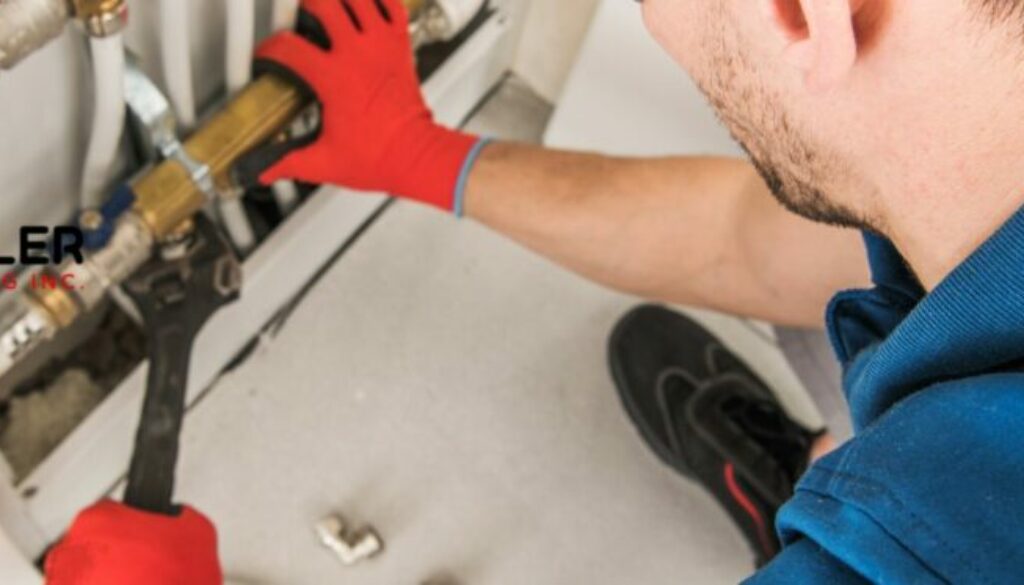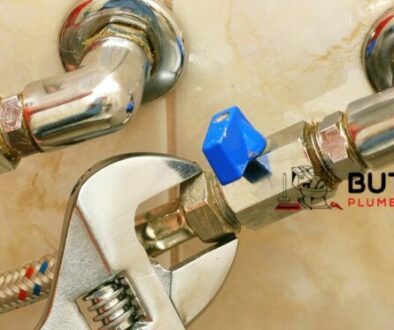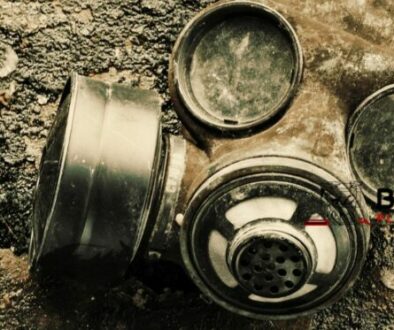How To Winterize Your Gas Plumbing System

Winterizing a gas plumbing system is an important maintenance task for any home. Properly winterized systems will not only save energy and money, but can also prevent serious damage to the pipes and other components of the plumbing system due to freezing temperatures.
Following some basic steps can ensure that your gas plumbing system remains safe throughout the cold season. This article will provide insight on how to properly winterize a gas plumbing system in order to protect it from potential damage caused by extreme weather conditions.
The main purpose of winterization is to eliminate water from all areas of the gas plumbing system, thereby reducing the chances for frozen pipes or equipment failure. To achieve this goal, certain techniques must be employed including draining tanks, valves, piping, hoses and other components; as well as sealing off outside access points with foam insulation.
Additionally, ensuring proper ventilation and using antifreeze solutions are necessary precautions when winterizing any type of gas plumbing system.
Draining Tanks And Valves
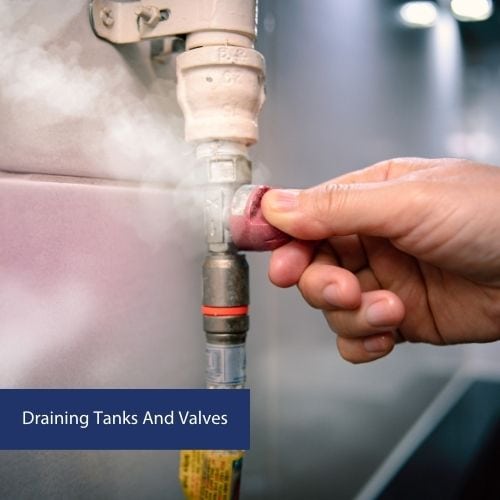
To winterize a gas plumbing system, the first step is to drain tanks and valves. This process begins by shutting off the main gas line coming into your house and turning all of the appliance control knobs to their ‘off’ position. Additionally, it is important to shut off any additional valves that may be in between appliances or along pipelines.
Once this has been accomplished, you can begin draining any remaining water from tanks or lines. To do this you will need to open up faucets and other access points at each end of the pipes until there is no more water flow remaining.
The next step with regards to tank and valve winterization is sealing off outside access points. It is essential that these are properly sealed so as not to allow cold air inside during freezing temperatures and potentially cause damage due to expansion from the freeze-thaw cycle. All vents should also be closed against airflow while ensuring they remain clear for ventilation when needed in warmer weather. In order to ensure proper closure, silicone caulk should be applied around doors and window frames where applicable.
With these steps complete, you have taken an important step toward preparing your gas plumbing system for winter conditions.
Sealing Off Outside Access Points
To winterize your gas plumbing system, sealing off outside access points is a crucial step.
This involves sealing pipes and adding insulation to protect them from colder temperatures.
Sealing Pipes
The first step in winterizing your gas plumbing system is to seal off any outside access points.
This can be done by applying a layer of caulk or expanding foam around all outdoor pipes and other openings, such as roof vents and chimneys.
To ensure complete protection from the elements, make sure there are no gaps between the pipe and caulk/foam that could let air in.
Additionally, you should use plastic covers on faucets and hose bibs to keep out moisture and debris during colder months.
With these steps taken, you will have ensured that your gas plumbing system remains well-protected against the harsh conditions of winter.
Pipe Insulation
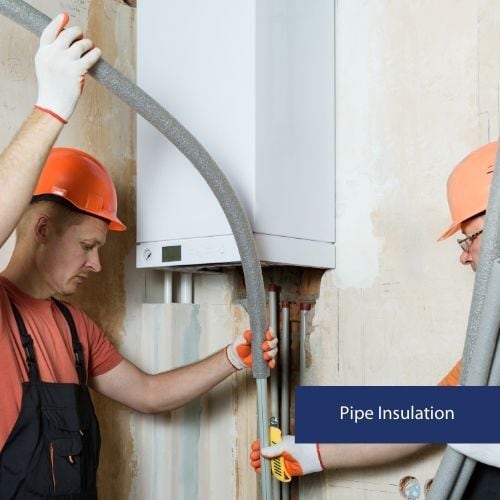
The next step in winterizing your gas plumbing system is to insulate any exposed pipes.
Pipe insulation helps protect against freezing temperatures, which can cause the water inside the pipe to expand and burst, resulting in costly repairs or property damage.
Insulation will also reduce heat loss from hot-water pipes, helping keep energy costs down during colder months.
The type of insulation needed for a given pipe depends on its diameter, location, and climate; it’s important to choose an appropriate material that offers a good balance between cost effectiveness and performance.
A plumber can help you select the right kind of insulation for your needs as well as install it correctly so that your piping remains safe all year round.
Ensuring Proper Ventilation
Now that we have securely sealed off all outside access points to the gas plumbing system, it is time to ensure proper ventilation. After all, when you think about winterizing your gas plumbing system, what good does sealing off exterior connections do if there are no safe routes for air and gasses to escape? It’s like trying to hold a beach ball underwater; eventually the pressure will become too much and disaster will occur.
To avoid such catastrophes:
- Check any vents or other openings that provide an exit route for air and gases in the gas plumbing system. Make sure these vents are not blocked by dust or debris as this can cause blockages which would prevent sufficient airflow through the pipes.
- Inspect flues used with boilers and other appliances which use natural or manufactured gas. Ensure they are secured tightly against drafts coming from outdoors while still allowing adequate ventilation so dangerous gases can be safely expelled into the atmosphere without causing harm indoors.
- Make sure combustion air ducts supplying additional oxygen necessary for burning fuel efficiently remain clear of obstructions so furnace efficiency is optimized.
- Verify chimneys are free of blockage due to leaves, birds nests, etc., which could create hazardous conditions inside the home should flames backdraft from the appliance into living areas instead of up out of the chimney where smoke belongs.
- Finally, take extra care to make sure nothing blocks intake louvers on furnaces during cold weather months as this ensures fresh clean air enters combustion chambers so unburned fuel vapors don’t build up in living spaces creating health risks for occupants who live within them.
With proper ventilation taken care of, our next task is utilizing antifreeze solutions throughout our gas plumbing systems before temperatures drop too low!
Utilizing Antifreeze Solutions
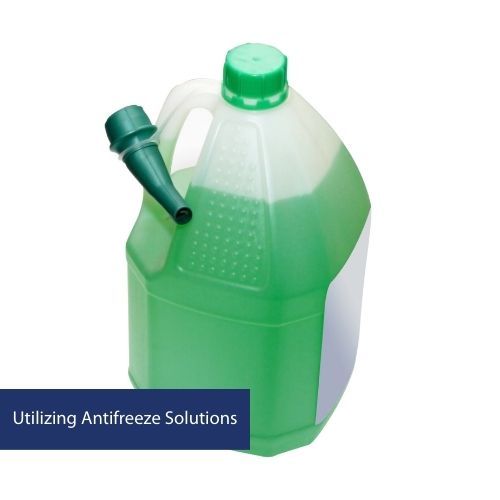
To winterize a gas plumbing system, it is important to use antifreeze solutions. These solutions ensure that the pipes and fixtures of a home remain safe from freezing temperatures.
To begin this process, one should start by draining any existing water in the system and then replacing it with an RV-type antifreeze solution. This type of solution can be found at most hardware stores and will prevent damage caused by frozen pipes during extreme cold weather.
It is also recommended to add more than enough antifreeze to fill all lines, traps, and even fixtures such as toilets or faucets. Taking these steps will help protect your home’s plumbing system against potential costly repairs due to frozen pipe damage.
After ensuring that all components are properly filled with antifreeze, testing for leaks and other issues is necessary before wrapping up the winterizing process.
Testing For Leaks And Other Issues
Properly winterizing your gas plumbing system is essential to ensuring peak performance and efficiency during cold weather months. One of the best ways to do this is by utilizing antifreeze solutions, as they are effective at reducing the risk of freezing pipes.
After you have successfully applied an antifreeze solution, it’s important to test for any possible leaks or other issues that may arise from its use. This can be done using a pressure gauge and water meter – if either show signs of low pressure or irregular readings, then a leak in the system has likely occurred and needs immediate attention.
Checking seals on all pipe connections should also be part of regular maintenance when winterizing your gas plumbing system. If these become damaged or worn out due to age, poor installation practices, or accidental damage, then it could lead to serious problems down the road. It’s always a good idea to replace them with new components before beginning the process of winterization.
Additionally, make sure there isn’t any debris blocking drains or vents around appliances which could cause potential blockages over time. Taking these simple steps will help ensure that your gas plumbing system operates smoothly throughout the year!
Frequently Asked Questions
What Type Of Antifreeze Should I Use For My Gas Plumbing System?
When it comes to winterizing gas plumbing systems, choosing the right antifreeze is essential for ensuring that pipes and fixtures remain safe from freezing temperatures.
A plumber must be knowledgeable when selecting an antifreeze; this often requires research into various brands of propylene glycol-based non-toxic RV antifreezes or ethylene glycol-based automotive antifreezes.
To illustrate how complicated the decision can be, a professional plumber might recall the story of one client who wasn’t aware that their gas system was affected by cold weather until they found out too late during frigid winter months.
Thankfully, with proper education on different types of antifreezes and their respective applications, this type of situation can easily be avoided.
Plumbers serve a valuable role in helping homeowners overcome these challenges so they can keep their homes running smoothly all year round.
How Often Should I Winterize My Gas Plumbing System?
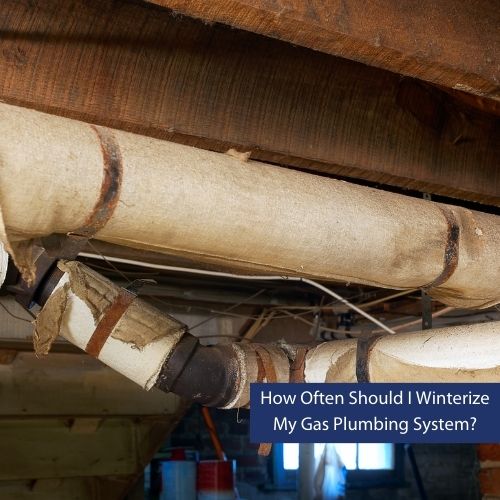
Winterizing your gas plumbing system is an important step to avoid costly repairs and potential health hazards. To ensure the safety of your home, it is recommended that you winterize your gas plumbing system at least once a year before colder temperatures arrive.
Doing so will help prevent freezing issues caused by water within pipes or appliances connected to the system, as well as any other related components. Winterizing should be done using antifreeze specifically designed for this purpose; these products can be purchased from most hardware stores.
It’s also wise to check with a professional plumber who can identify any underlying risks in your home and provide guidance on how best to proceed with the winterization process.
What Type Of Materials Do I Need For Winterizing My Gas Plumbing System?
Winterizing your gas plumbing system is an important step to prevent any damages that may be caused by extreme cold temperatures. It’s generally recommended that you winterize every year, but depending on the climate and location of a particular home or building, it might need to be done more often.
In order to get this job done right, there are certain materials needed:
- Pipe insulation material
- A high-quality antifreeze for your pipes
- Plugging compounds for joints and seals
- Some form of heat source such as electrical tape or electric blankets.
All these items should be available from most local hardware stores and will help ensure your gas plumbing system remains in top condition all year round.
What Are Signs That My Gas Plumbing System Needs To Be Winterized?
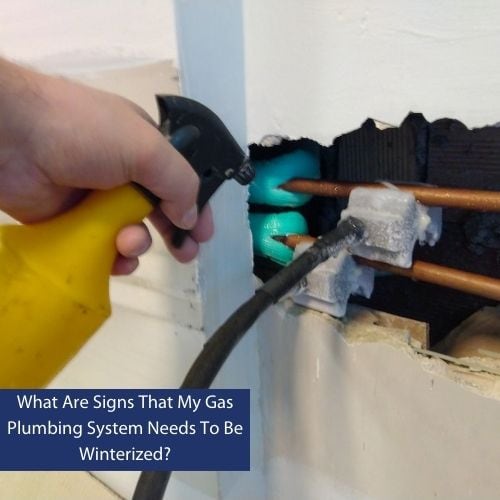
Winterizing your gas plumbing system is an important step in maintaining its optimal performance.
Signs that a gas plumbing system needs to be winterized include a drop in temperature, lower pressure than normal, and increased condensation on the pipes.
If you notice any of these signs, it’s best to take action quickly before any potential damage can occur.
By taking proper precautions such as draining the water lines, installing insulation, and sealing off vents or outdoor connections, your gas plumbing system will remain functional throughout the colder months.
Are There Any Safety Tips I Should Follow When Winterizing My Gas Plumbing System?
Winterizing your gas plumbing system is an important safety precaution that should not be overlooked.
Before beginning the process, it is essential to take necessary steps to ensure a safe and successful winterization for all involved.
To begin with, turn off the main power supply leading into the house as well as any individual appliances that use gas.
Additionally, inspect each connection in your piping system for wear or damage then tighten or replace anything that appears compromised.
Lastly, make sure to regularly check on the system throughout the cold months to guarantee everything remains functioning correctly.
Following these tips will help you successfully winterize your gas plumbing system while keeping everyone safe in the process.
Conclusion
As the temperatures drop and winter approaches, it’s important to take steps to protect your gas plumbing system. Without proper preparation, freezing weather can wreak havoc on pipes that are not properly protected. Taking the time to invest in antifreeze and other materials for winterizing can save you from costly repairs in the future.
Winterizing a gas plumbing system is essential if you want to prevent disastrous damage down the line. Choosing the right type of antifreeze and ensuring all parts are securely sealed off will help shield your pipes against freezing temperatures.
By following safety guidelines while completing this task, you can rest assured knowing your gas plumbing system is ready for whatever Mother Nature throws its way!

